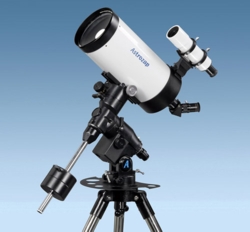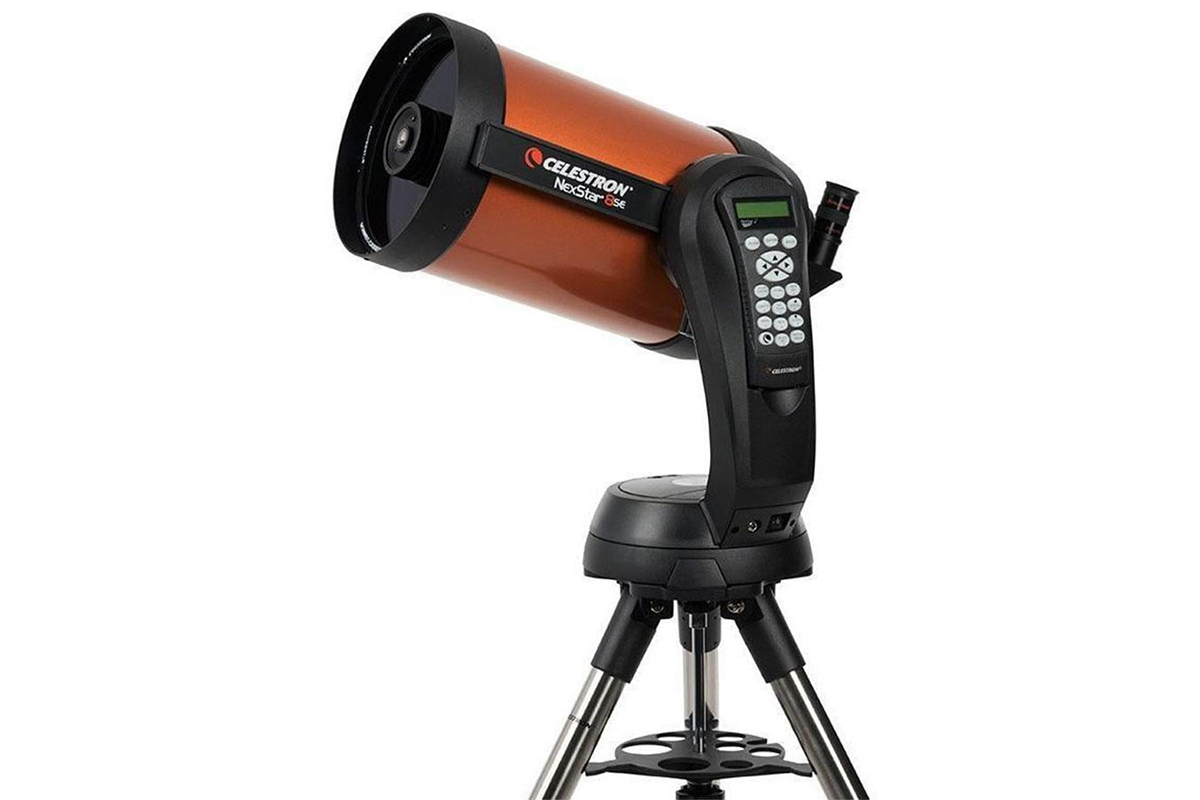Catadioptric telescope
 Also called hybrids, they constitute a combination of the use of lenses and mirrors. This configuration has several variations, but the best known is the Schmidt-Cassegrain (also called "classic cassegrain«). This has an optical system with a corrective lens located at the top of the tube, through which the light enters until it hits a parabolic mirror with an opening in the center; the light bounces off to a secondary hyperbolic mirror that reflects the light back, passing through said opening until finally reaching an eyepiece, where it is focused and the image is formed.
Also called hybrids, they constitute a combination of the use of lenses and mirrors. This configuration has several variations, but the best known is the Schmidt-Cassegrain (also called "classic cassegrain«). This has an optical system with a corrective lens located at the top of the tube, through which the light enters until it hits a parabolic mirror with an opening in the center; the light bounces off to a secondary hyperbolic mirror that reflects the light back, passing through said opening until finally reaching an eyepiece, where it is focused and the image is formed.
Advantages and disadvantages
Advantages – Great ease of use and very compact, without implying a short focal length
– Great ease of use and very compact, without implying a short focal length
– Corrective lens allows you to correct spherical aberration
– The tube is closed and is not exposed to dust or air turbulence inside.
– They require little maintenance
Disadvantages
– May suffer from “field curvature” aberration (correctable with a Reducer/Corrector accessory)
– Suffers loss of contrast and sharpness, due to the space occupied by the secondary mirror in front of the tube
– They are devices whose sophistication makes them more expensive than other models.
This design is the most efficient, since it combines the best of the previous ones and eliminates reflector problems, plus its configuration makes it very compact but with a long focal length. In addition to the Schmidt-Cassegrain configuration, there is also the Maksutov-Cassegrain, whose primary and secondary mirrors are spherical, and the Ritchey-Chretien, whose primary and secondary mirrors are hyperbolic. This variant is currently used by almost all professional telescopes. Their advanced system also makes these telescopes the most expensive for amateur purposes.
Along with considering these characteristics of the main types of telescopes, the amateur must also take into account the mount, eyepieces and accessories that best suit what he or she wants to achieve with his or her instruments.


